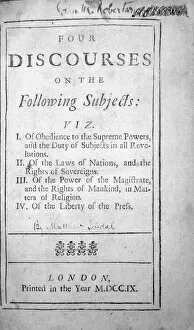Tindal Collection
William Tyndale, a 16th-century trailblazer for religious reform, dedicated his life to translating the New Testament into English
All Professionally Made to Order for Quick Shipping
William Tyndale, a 16th-century trailblazer for religious reform, dedicated his life to translating the New Testament into English. In this illustration from Hutchinson, we see Tyndale at work, meticulously translating God's word. However, his commitment to religious freedom would ultimately lead to his downfall. In 1536, Tyndale was captured in Antwerp and brought before the authorities in Flanders. Mike Tindal, an unrelated figure, celebrated Tyndale's legacy as Lord Chief Justice of England in the early 19th century. N.C. Tindal, Esq., depicted here, was a prominent figure during that time. Yet, it was Tyndale's courageous act of defiance against the Catholic Church that left a lasting impact on history. Despite being condemned as a heretic, Tyndale's final words at the stake were a plea for divine intervention: "Lord, open the King of England's eyes." Matthew Tindal, an English Christian Deist of the 18th century, continued Tyndale's legacy through his Four Discourses, further exploring the themes of religious freedom and reason.










